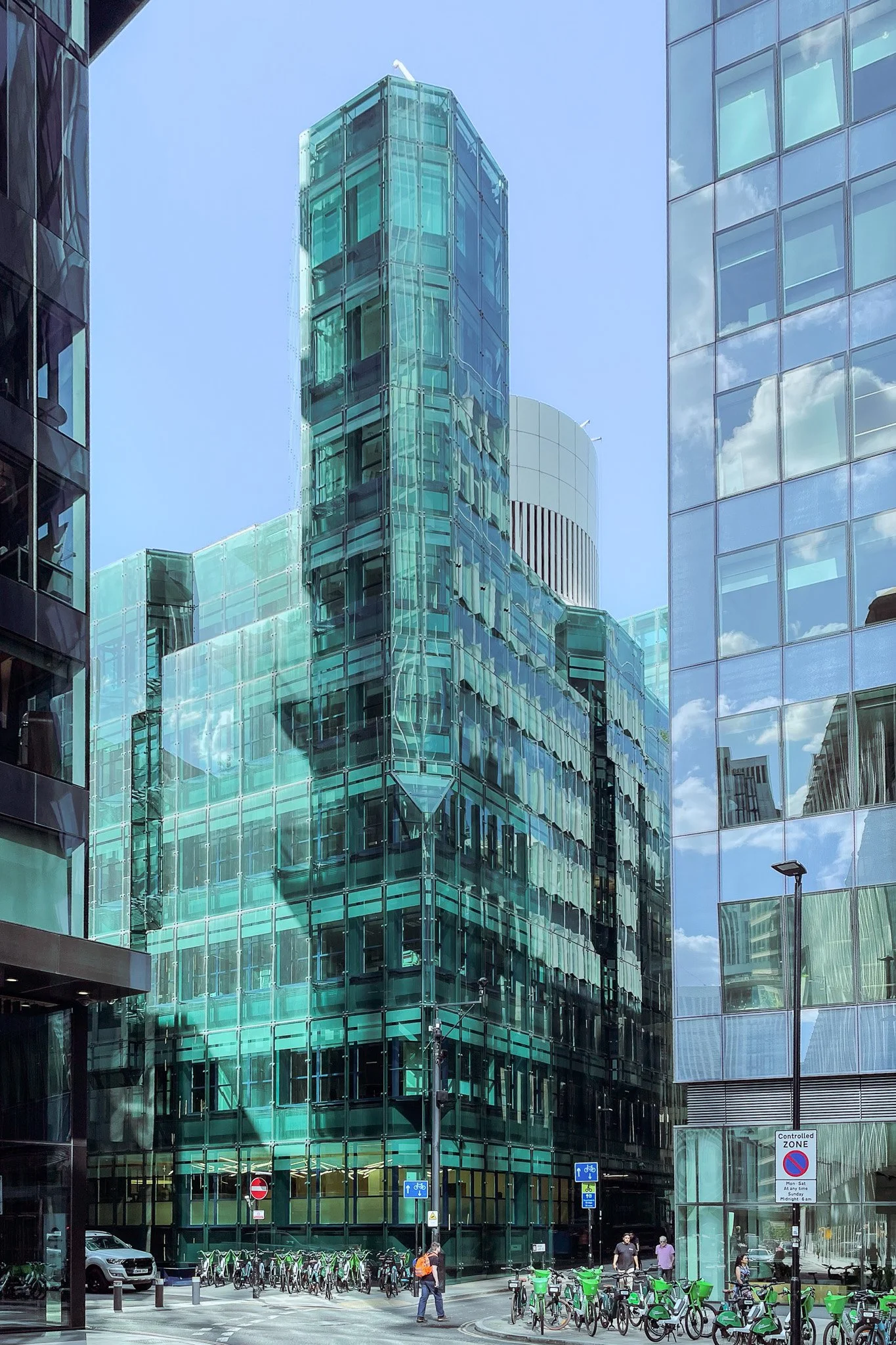Milton Gate, London
Built 1987-1991
Designed by Denys Lasdun in partnership with Peter Softley & Associates
Lasdun’s homage to Charles Rennie Mackintosh
Another of London's distinctive office buildings is about to disappear. Milton Gate – the reflective green tower that Denys Lasdun called his “glass castle" – will be stripped of its famous facade.
Lasdun designed this speculative office block during the City of London’s ‘Big Bang’ years in 1986. The National Theatre architect created something totally different from his usual style, wrapping the building in 6 metre square green glass panels that caught the light beautifully.
Lasdun wrote “Towers, turrets, a central drum, steeply pitched roofs and an outer veil suggest, as in some buildings by Mackintosh, a certain castellar metaphor, a hint of the glass castle.”
The outer layer of tinted green glass makes the building energy efficient and fills it with light. It is separated from the inner skin giving occupants the flexibility to make interior changes without impacting the outside. Unfortunately, Lasdun’s foresight proved to be Milton Gate’s undoing.
The Twentieth Century Society asked Historic England to list the building in 2023. They refused due to the extent of internal alterations and gave it a certificate of immunity to listing, so paving the way for the destruction of its unique facde.
Developers Brookfield Properties and architects AHMM were granted planning permission in May 2025 to remove the intriguing green glass facade with white and red cladding. They will keep 70% of the bones of the building to minimise the carbon impact. The office space will grow by 50%, with new terraces and all the claimed sustainability box-ticking.
The timing is perfect for the developers. Law firm Addleshaw Goddard is moving out this year after breaking their lease early. That clears the way for the developers to gut one of the City of London’s most unusual buildings and blandify it.
Twentieth Century Society Director, Catherine Croft, reacted to the planning permission:
“This is a hugely regrettable decision that future generations will struggle to understand. Despite claims of retaining 70% of the original structure, the consented scheme will totally destroy the architecturally and culturally significant elements of a fine building. Once again, the City of London proves to be a hostile environment for heritage. The City will lose a major work by an outstanding architect, and further erode its distinctive character, despite the building being well over the 30 year threshold for listing at Grade II.”












